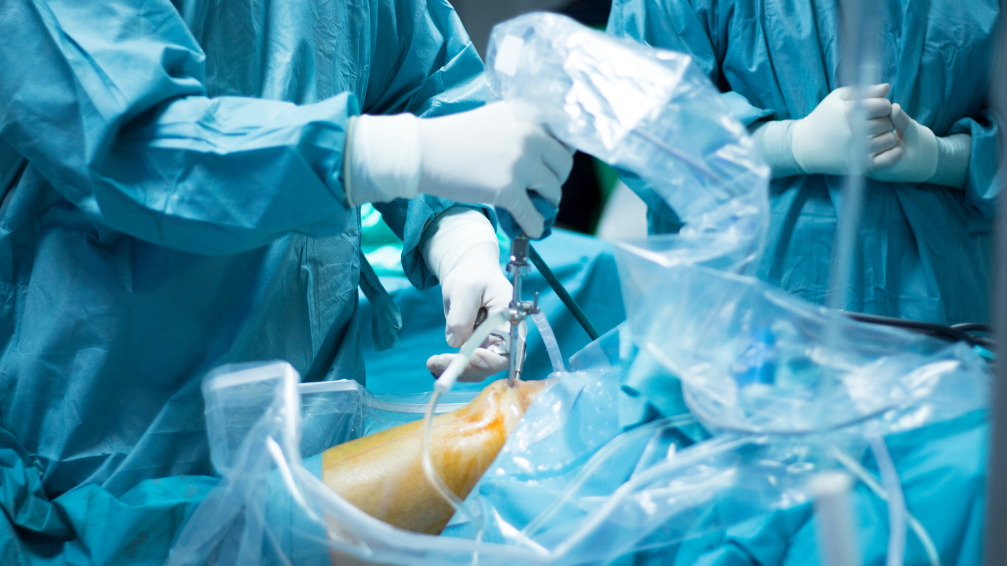
Things to know about Robotic Surgery
We believe minimally invasive care is life-enhancing care

Introduction
Doctors sometimes require assistance during surgery, particularly during procedures that demand delicate and smaller movements. This is where Robotic surgery comes in. Robotic or robot-assisted surgery allows doctors to conduct complicated medical procedures more accurately and under control. It enables unmatched accuracy and monitoring during various surgical procedures, resulting in fewer complications and faster healing times. Robotic systems have expanded the possibilities of future surgical techniques by providing greater agility and visibility to surgeons, enabling them to perform fine movements with increased precision.
It is not only a technological marvel, but also an advancement in patient care offering small incisions, reduced scars, and shorter hospital stays. This progress has necessitated further development in robotics to perfect surgical procedures and make them more accessible thereby ensuring that the medical field remains innovative. For a complete guide about robotic procedures, please read this blog post.
Table of contents:
- What is Robotic Surgery?
- Benefits of Robotic Surgery
- Conditions Commonly Treated
- Before Robotic Surgery
- During Robotic Surgery
- After Robotic-Assisted Surgery
- Conclusion
- Faqs
What is Robotic Surgery?
Robotic surgery, also known as robot-assisted surgery, is a surgical operation method in which doctors use robotic systems. This surgery allows robotic surgeons to perform many types of complex procedures with greater precision, flexibility, and control. The surgeon’s movements are translated into precise movements of the robotic arms to facilitate highly accurate procedures during operations.
Advantages of Robotic Surgery:
- Better robotic device dexterity than a surgeon’s hand, allowing access to parts that are hard to reach
- The surgeon is less tired.
- The Elimination of the surgeon’s hand tremor.
- Smaller incisions and other advanced methods imply a shorter stay in the hospital and quicker recovery for patients who undergo Da Vinci robotic surgery.
- It also has fewer chances of infection compared to traditional surgery.
- Blood loss is reduced, and fewer blood transfusions are needed (compared to traditional surgery).
- Low pain levels and minimal scarring
- Quicker return to normal function.
Conditions Commonly Treated
Robotic-assisted technology can be used in many surgeries, such as:
- General surgery like gall bladder removal, severe cases of GERD (gastroesophageal reflux disease), gastric bypass and banding, and pancreatic and liver tumors.
- Head and neck surgery, including cancers of the throat or tongue, thyroid cancer, etc.
- Urological surgery, e.g., prostatectomy, kidney stones, other kidney problems, urinary incontinence, kidney or bladder operation, and total, partial nephrectomy.
- Heart surgeries like coronary artery bypass, mitral valve prolapse, atrial fibrillation (irregular heart rhythm), and many others.
- Cancer surgeries to eliminate tumors, especially those near key body parts such as blood vessels and nerves.
- Orthopedic surgeries such as total hip replacement.
Before Robotic Surgery
It’s necessary to do the following things before undergoing surgery:
- Get to know about the operation.
- Talk to your doctor about the pros and cons of robotic-assisted surgery.
- Adhere to all preoperative instructions concerning food and medications from your healthcare provider
- Other procedures, such as colon operations, may require you to take an enema or laxatives before surgery.
- You must request over-the-counter drugs, herbs, or supplements in addition to prescribed medications and follow the provider’s guidelines on how much and when.
- Remember, any drug that would not allow blood to clot easily could cause bleeding during the surgery, like aspirin, Coumadin, or Plavix, and these drugs should be stopped at least ten days before the surgery.
- Ensure you have someone to drive you home after the procedure and assist you with day-to-day activities until full recovery.
During Robotic Surgery
The steps to follow during robotic-assisted surgery are as follows:
- The surgeon cuts small openings (about 1 to 2 cm or .393 to .787″) through which he/she can insert his/her instruments into your body. This is why minimally invasive surgery is also called robotic surgery.
- The surgeon inserts a small, flexible pipe with a camera called an endoscope into a patient to better view the surgical site in a magnified 3D display. They insert tiny robots, along with the powerful camera used by the surgeon, inside you.
- Respective vital or functional body parts (e.g., appendix) are removed through one of the small cuts.
- After surgery, the incisions are stitched up and covered with a band-aid.
Post Robotic-Assisted Surgery
Nevertheless, healing after a robotic operation is ordinarily much faster as well as less painful than traditional surgery; however, some restrictions on activities and lifting may be given as post-operative (after surgery) instructions, including:
- The surgeon might suggest that you abstain from heavy lifting or straining Until you get a go-ahead from your doctor,
- Your surgeon recommends avoiding driving for at least one week.
- Follow your doctor’s advice on pain relief drugs or other post-operative instructions after this procedure.
- Directions for reaching your healthcare provider if the pain becomes worse (especially if it is not better after taking pain medicine), you vomit, have nausea, and bleed,
- Just speak with your surgeon beforehand about what will happen after surgery so you’ll be ready.
Conclusion
One of the most important advances in medical technology is robot-assisted surgery which has several advantages over traditional surgery such as increased accuracy, less invasive procedures, and quicker recovery. Nevertheless, it cannot be used in every surgical operation, may be costly, and requires extensive training. It remains one of the most transformative aspects of global healthcare today. Technological improvements offer more chances for bettering robotic surgical techniques, thus widening the scope and effectiveness of this new method.
If you want more information, contact a Robotic Surgeon. We are the Best robotic surgery hospital in India. We are experts and can give you accurate advice. This will allow you to make an informed decision about your health regarding Robotic surgery’s advantages, disadvantages, and appropriateness for your particular medical situation. Contacting an expert will help you understand the pros, cons, and effectiveness of using surgeons for surgical procedures while considering your interests.



